‘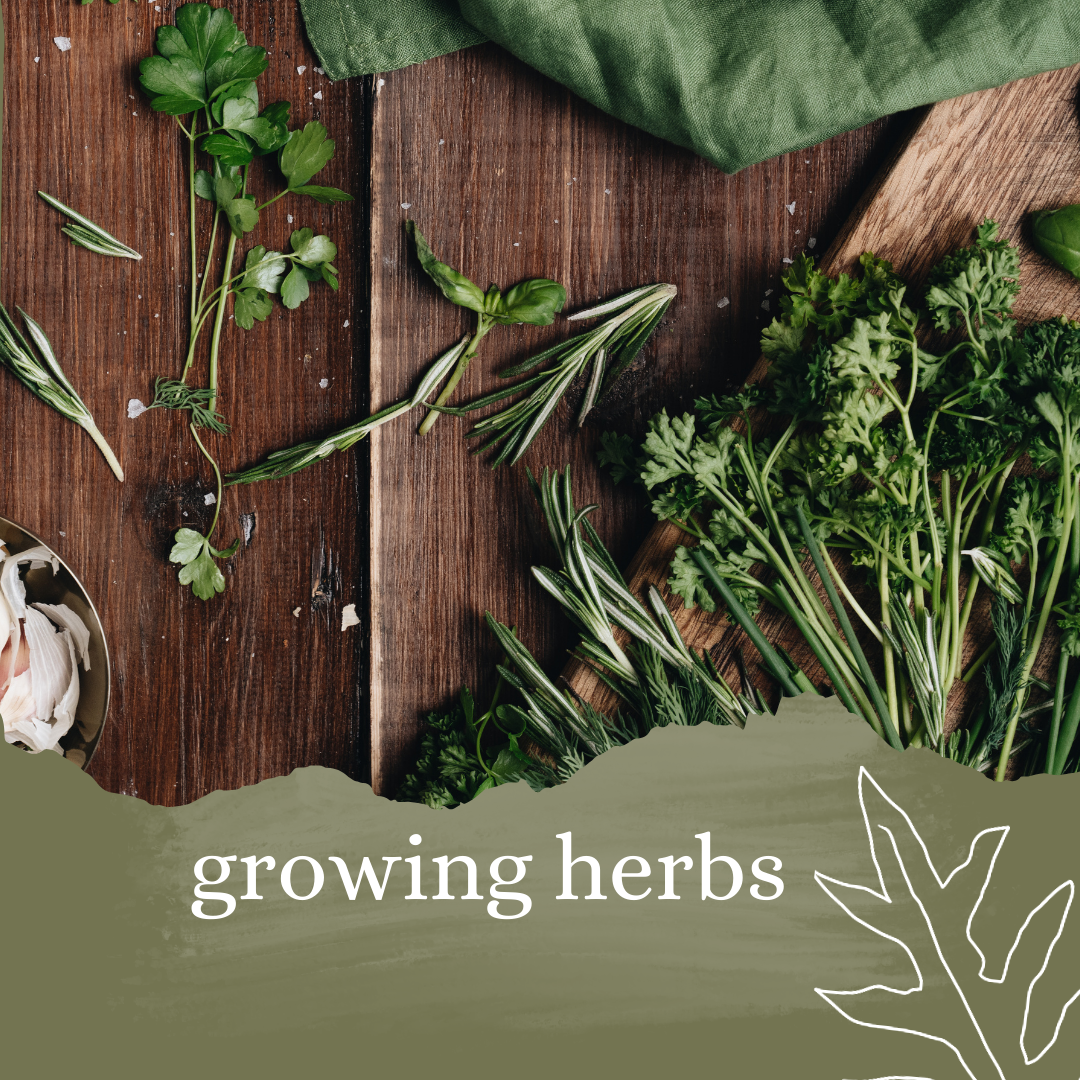
 Chevallier, Andrew. Encyclopedia of Herbal Medicine, pg. 286.
Chevallier, Andrew. Encyclopedia of Herbal Medicine, pg. 286.
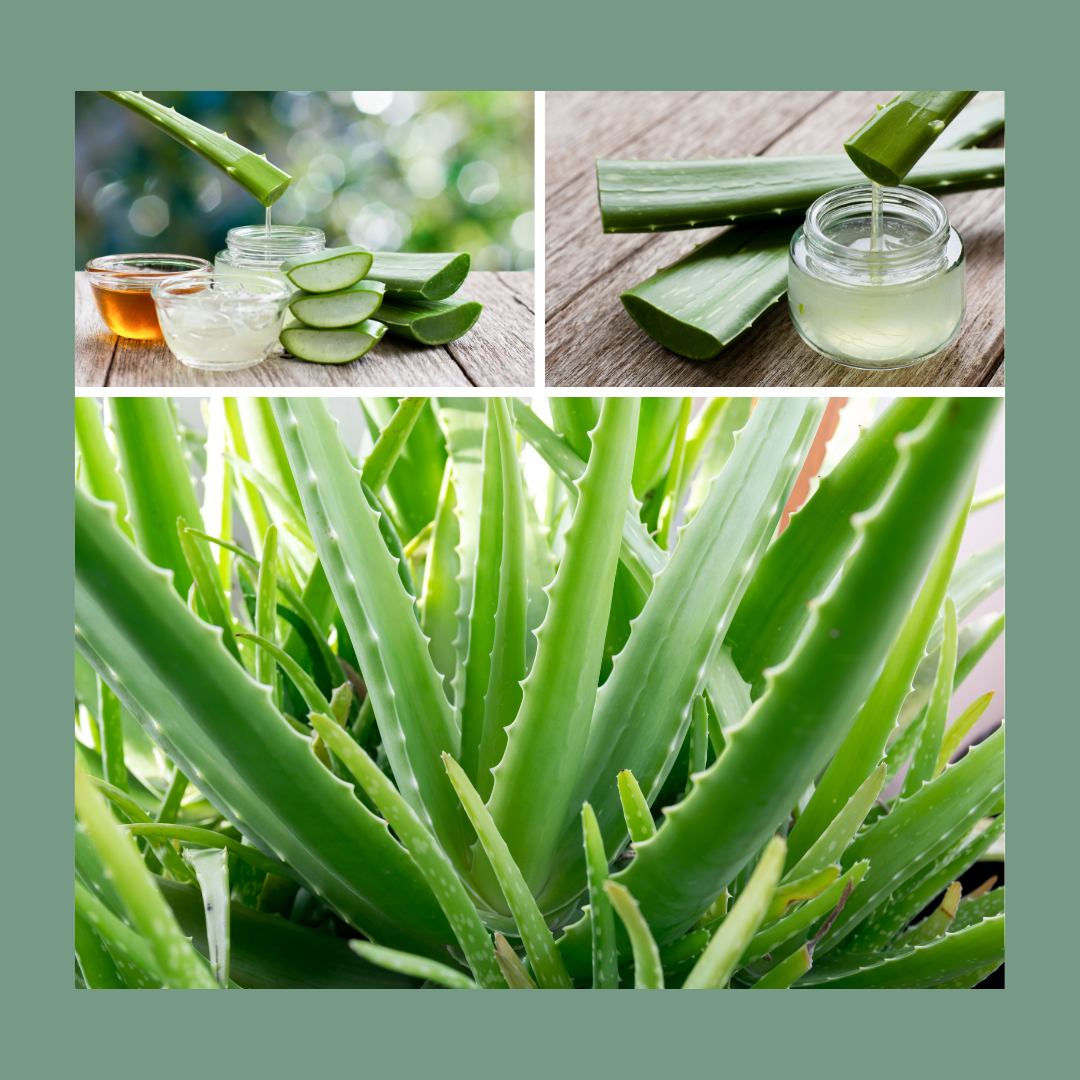
Aloe Vera
“Native to Africa, aloe vera is commonly cultivated as a potted plant and has two distinct types of medicinal use. The clear gel contained in the leaf is a remarkably effective healer of wounds and burns, speeding up the rate of healing and reducing the risk of infection. The yellow sap from the base of the leaf when dried is known as ‘bitter aloes.’ It is a strong laxative, useful for short-term constipation.
“Aloe vera has prickly, gray-green, succulent leaves that yield effective medicinal substances.
Habitat & Cultivation
“Native to eastern and southern Africa, aloe vera grows wild in the tropics and is cultivated extensively worldwide. (Aloe vera plants grown as potted plants have a low anthraquinone content.) Aloe vera is propagated by breaking off small rooted plantlets. To collect the gel and bitter liquid, the leaves are cut and drained
Key Actions
■ Heals wounds
■ Emollient
.■ Stimulates secretions of bile
■ Laxative
Research
■ Healing properties
“Extensive research since the 1930s in the U.S. and Russia has shown that the clear gel has a dramatic ability to heal wounds, ulcers, and burns, putting a protective coat on the affected area and speeding up the rate of healing. This action is in part due to the presence of aloectin B, which stimulates the immune system. Traditional & Current Uses
■ Beauty treatment
“Aloe vera has a long history as a skin lotion— Cleopatra is said to have attributed her beauty to it.
■ Western remedy In the West, aloe vera first became popular in the 1950s when its ability to heal burns, in particular radiation burns, was discovered.
■ First aid
“Aloe vera is an excellent first aid remedy for burns, scrapes, scalds, and sunburn. A leaf, broken off, releases soothing gel, which may be applied to the affected part.
■ Skin conditions
“The gel is useful for almost any skin condition that needs soothing and astringing, and will help varicose veins to some degree.
■ Ulcers The protective and healing effect of aloe vera also works internally, and the gel can be used for peptic ulcers and irritable bowel syndrome.
■ Laxative The bitter yellow liquid in the leaves (bitter aloes) contains anthraquinones, which are strongly laxative. They cause the colon to contract, generally producing a bowel movement 8–12 hours after consumption. At low doses, the bitter properties of the herb stimulate digestion. At higher doses, bitter aloes are laxative and purgative.
Chevallier, Andrew. Encyclopedia of Herbal Medicine, pg. 60.
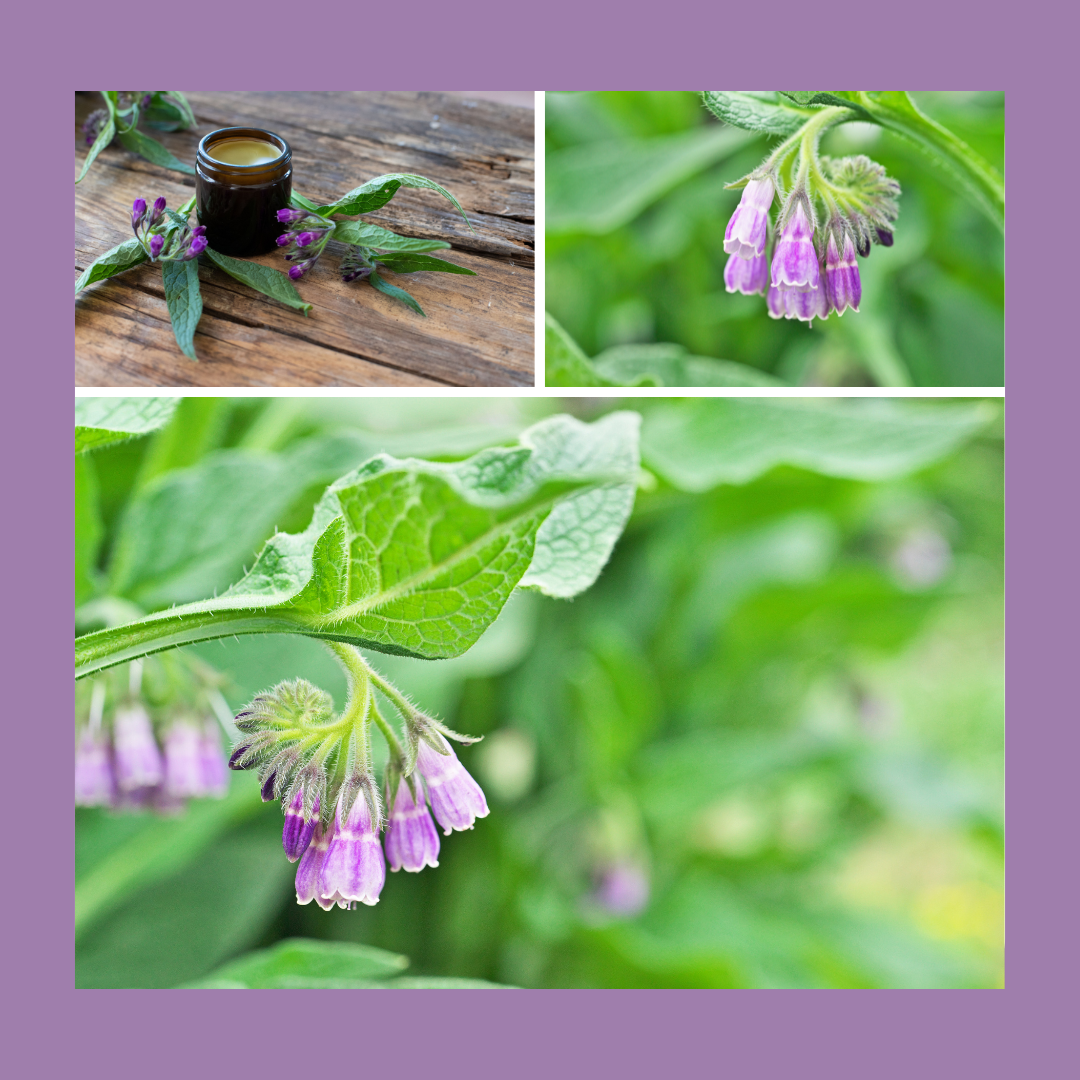
Comfrey
“Comfrey’s names testify to its traditional use in mending broken bones. “Comfrey” is a corruption of con firma, meaning the bone is ‘made firm,’ Symphytum is derived from the Greek for ‘to unite,’ and knitbone speaks for itself. Comfrey is also a wound herb. K’Eogh in his Irish Herbal (1735) wrote that it ‘heals all inward wounds and ruptures.’ Today, it is still highly regarded for its healing properties.
Habitat & Cultivation
“An indigenous European plant, comfrey grows in all temperate regions of the world, including western Asia, North America, and Australia. It thrives in moist, marshy places. It can be grown from seed in spring or by root division in autumn, and the leaves and flowering tops are harvested in summer. The root is unearthed in autumn.
Key Actions
■ Demulcent
■ Astringent
■ Anti-inflammatory
■ Heals wounds and bones
Research
■ Active constituents
“Allantoin is a cell-proliferant that stimulates the repair of damaged tissue. The herb’s anti-inflammatory activity is partly due to the presence of rosmarinic acid and phenolic acids.
■ Pyrrolizidine alkaloids
“Research shows that, as isolated substances, certain pyrrolizidine alkaloids can be highly toxic to the liver. It is still unclear whether they are toxic in the context of the whole plant, as they are only present in minute amounts, often being completely absent from samples of dried aerial parts. The highest concentration is in the root, which should not be used internally. Skin applications, as well as the aerial parts of the plant, are considered safe.
■ Clinical research In
“Germany and elsewhere in Europe, comfrey is widely used for sprains, bruises, and sports injuries. Research, mostly in Germany, endorses the traditional knowledge of comfrey’s woundhealing ability. In a 2007 study, physicians rated the efficacy of a comfrey leaf cream in healing abrasions. The doctors rated its effectiveness as good or very good in 93% of cases, and complete healing took 4 days with comfrey and 7 days with placebo. Other studies indicate comfrey’s value in promoting tissue repair and as an anti-inflammatory in conditions such as sprained ankle, osteoarthritis, and lower back pain.
Traditional & Current Uses
■ Injuries
“Comfrey’s ability to promote the healing of bruises,sprains, fractures, and broken bones has been known for thousands of years. It encourages ligaments and bones to knit together firmly. A comfrey compress applied immediately to a sprained ankle can significantly reduce the severity of the injury. The combination of tannins and mucilage helps to soothe bruises and grazes.
■ Other uses
“Comfrey preparations have many other uses and can be Comfrey was known to the Greek physician Dioscorides in the 1st century ce, who wrote about it in his Materia Medica.
Parts Used Key
“Preparations & Their Uses applied to heal problems such as insect bites, scars, skin inflammation, acne, and mastitis. Chevallier, Andrew. Encyclopedia of Herbal Medicine, pg. 138.
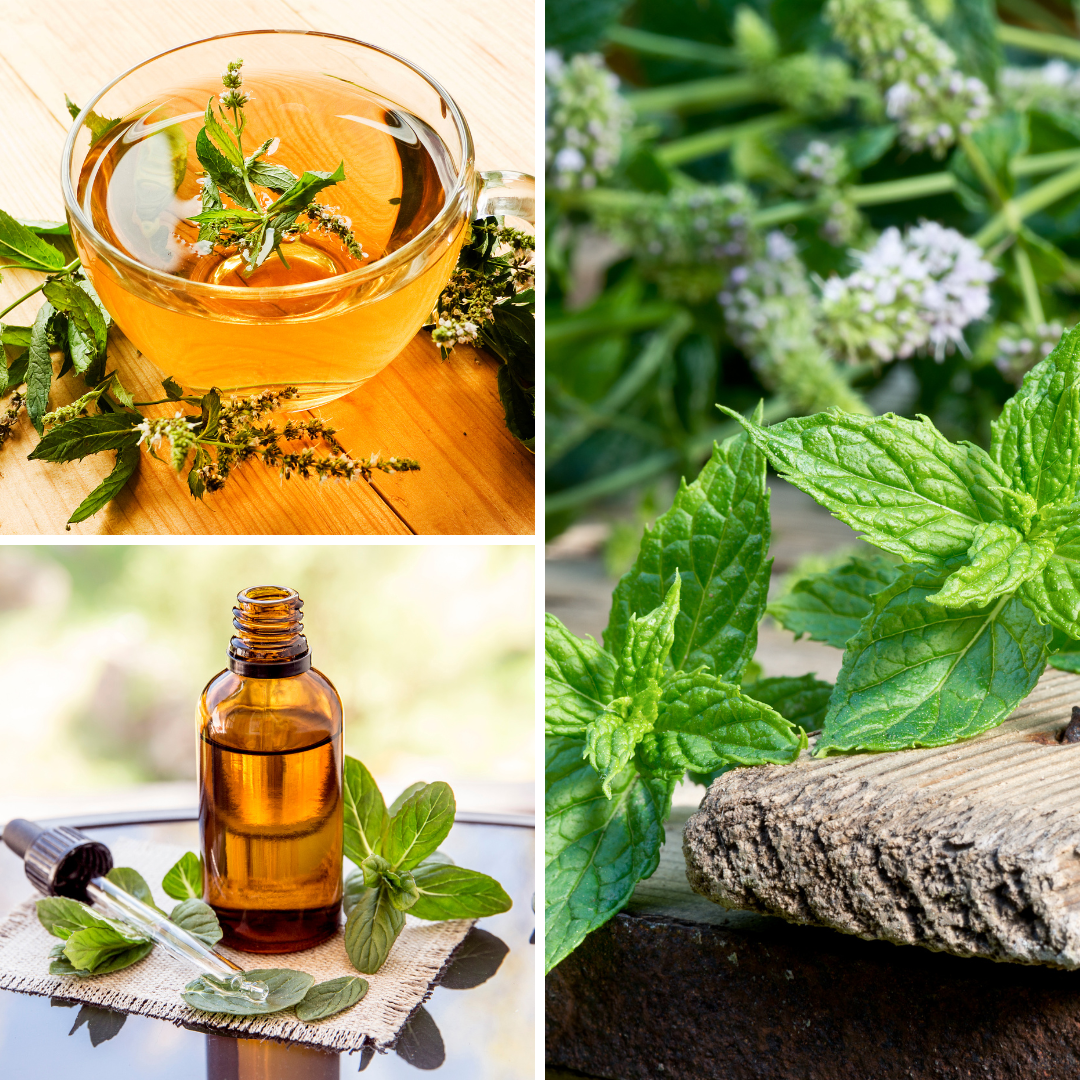
Peppermint
“Peppermint’s origin is a mystery, but it has been in existence for a long time—dried leaves were found in Egyptian pyramids dating from around 1000 bce. It was highly valued by the Greeks and Romans, but only became popular in Western Europe in the 18th century. Peppermint’s chief therapeutic value lies in its ability to relieve gas, flatulence, bloating, and colic, though it has many other applications.
Habitat & Cultivation
“Peppermint is grown commercially and in gardens throughout Europe, Asia, and North America. It is propagated from seed in spring and is harvested just before it flowers in summer, in dry sunny weather.
Related Species
“Peppermint is a hybrid of watermint (M. aquatica) and spearmint (M. spicata), which have similar, though milder, therapeutic properties.
Key Actions
■ Antispasmodic
■ Stimulates sweating
■ Antimicrobial
■ Analgesic
■ CarminativeResearch
■ Volatile oil
“Research has shown that the volatile oil is strongly antibacterial. Menthol (a constituent of the oil) is antiseptic, antifungal, cooling, and anesthetic to the skin, although it is also an irritant.
■ Whole herb
“The whole plant has an antispasmodic effect on the digestive system. Clinical trials in Denmark and the UK during the 1990s have confirmed its value in the treatment of irritable bowel syndrome.
Traditional & Current Uses
■ Digestive problems
“Peppermint is excellent for the digestive system, increasing the flow of digestive juices and bile and relaxing the gut muscles. It reduces nausea, colic, cramps, and gas, and soothes an irritated bowel. In soothing the lining and muscles of the colon, it helps diarrhea and relieves a spastic colon (often the cause of constipation).
■ Pain relief
“Applied to the skin, peppermint relieves pain and reduces sensitivity. It also relieves headaches and migraines linked to digestive weakness.
■ Infection
“Diluted oil is used as an inhalant and chest rub for respiratory infections. The whole herb is important for digestive infections. Chevallier, Andrew. Encyclopedia of Herbal Medicine, pg. 114.
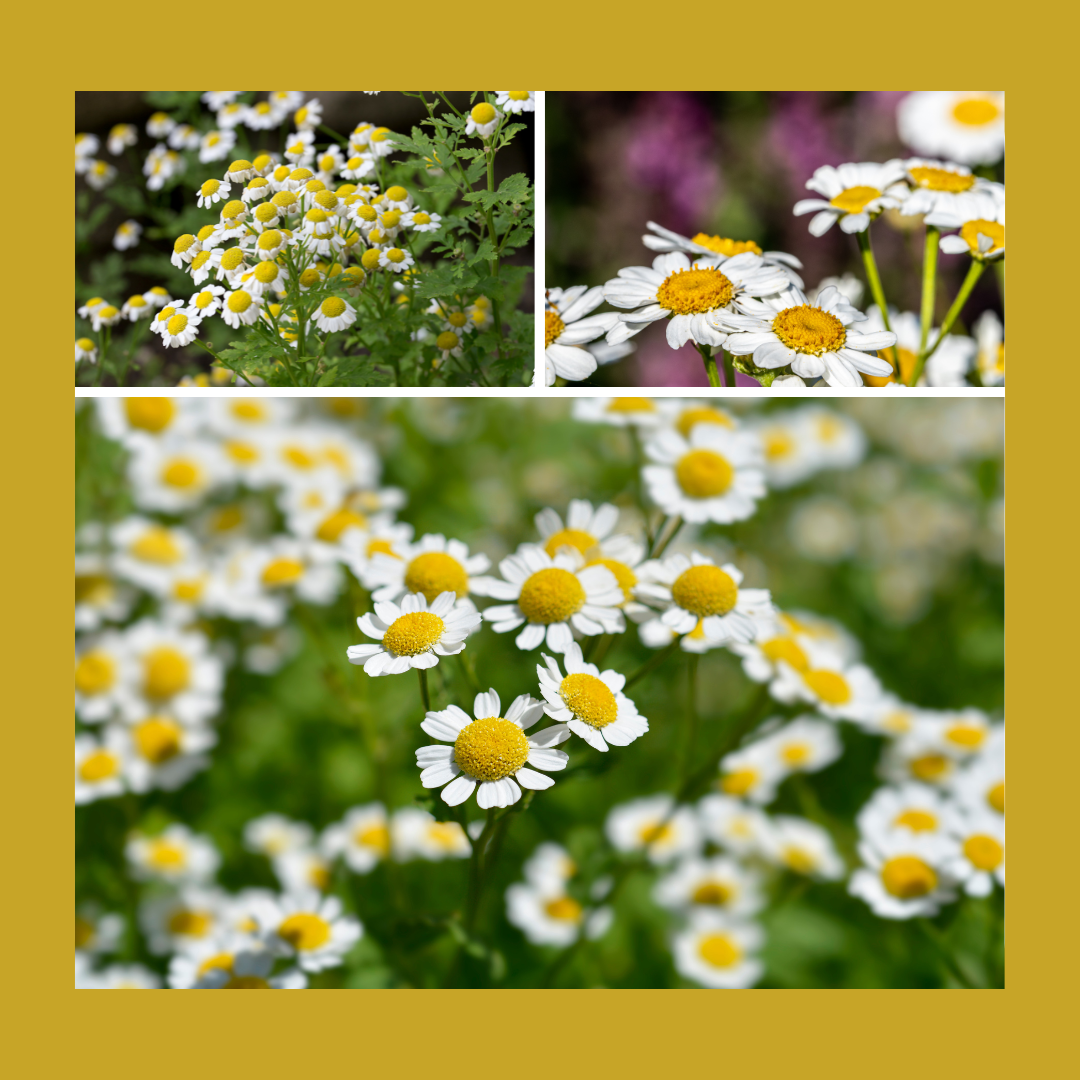
Feverfew
“Feverfew’s main traditional use was as a woman’s herb. Nicholas Culpeper in The English Physitian (1652) sings its praises as “a general strengthener of [the] womb … it cleanseth the womb, expelleth the after-birth and doth the woman all the good she can desire of an herb.” Feverfew is now used principally as a treatment for migraine, but has also long been thought of as an herb for arthritis and rheumatis.
“Feverfew has daisylike flowers that bloom all summer.
Habitat & Cultivation
“Originally from southeastern Europe, feverfew is now common throughout Europe, Australia, and North America. It can be propagated from seed or cuttings, and prefers well-drained soil and sun. The leaves are picked as required and the aerial parts as a whole are harvested in summer when the plant is in flower
Related Species
“Feverfew is a close relative of tansy and the chrysanthemum and chamomile species
.Key Actions
■ Anti-inflammatory
■ Analgesic
■ Reduces fever
■ Antirheumatic
■ Promotes menstrual flow
Research
■ Migraine
“When, in 1973, the wife of a Welsh doctor ended her 50- year history of migraine with a course of feverfew, a detailed scientific investigation got underway. In clinical trials in Britain during the 1980s the herb was shown to be an effective remedy for migraine. Further clinical trials across Europe, including one in 2006 that combined feverfew and willow bark (Salix alba, p. 129), attest to feverfew’s ability to treat migraine. The trials indicate feverfew may need to be taken long term (for 6 months or more) for full effect.
■ Rheumatoid arthritis F
“everfew’s effectiveness in the treatment of rheumatoid arthritis is being investigated. Traditional & Current Uses
■ Fevers
“As its name implies, feverfew may be used to lower temperature and cool the body.
■ Gynecological uses
“The herb has been used since Roman times to induce menstruation. It is also given in childbirth to aid expulsion of the placenta.
■ Migraine & headaches
“In small quantities, feverfew is now used as a preventative for migraine. It has to be taken regularly, and at the first signs of an attack. It is useful for migraine associated with menstruation, and for headaches.
■ Arthritis remedy
“The herb can help arthritic and rheumatic pain, especially with other herbs
Chevallier, Andrew. Encyclopedia of Herbal Medicine, pg. 140.
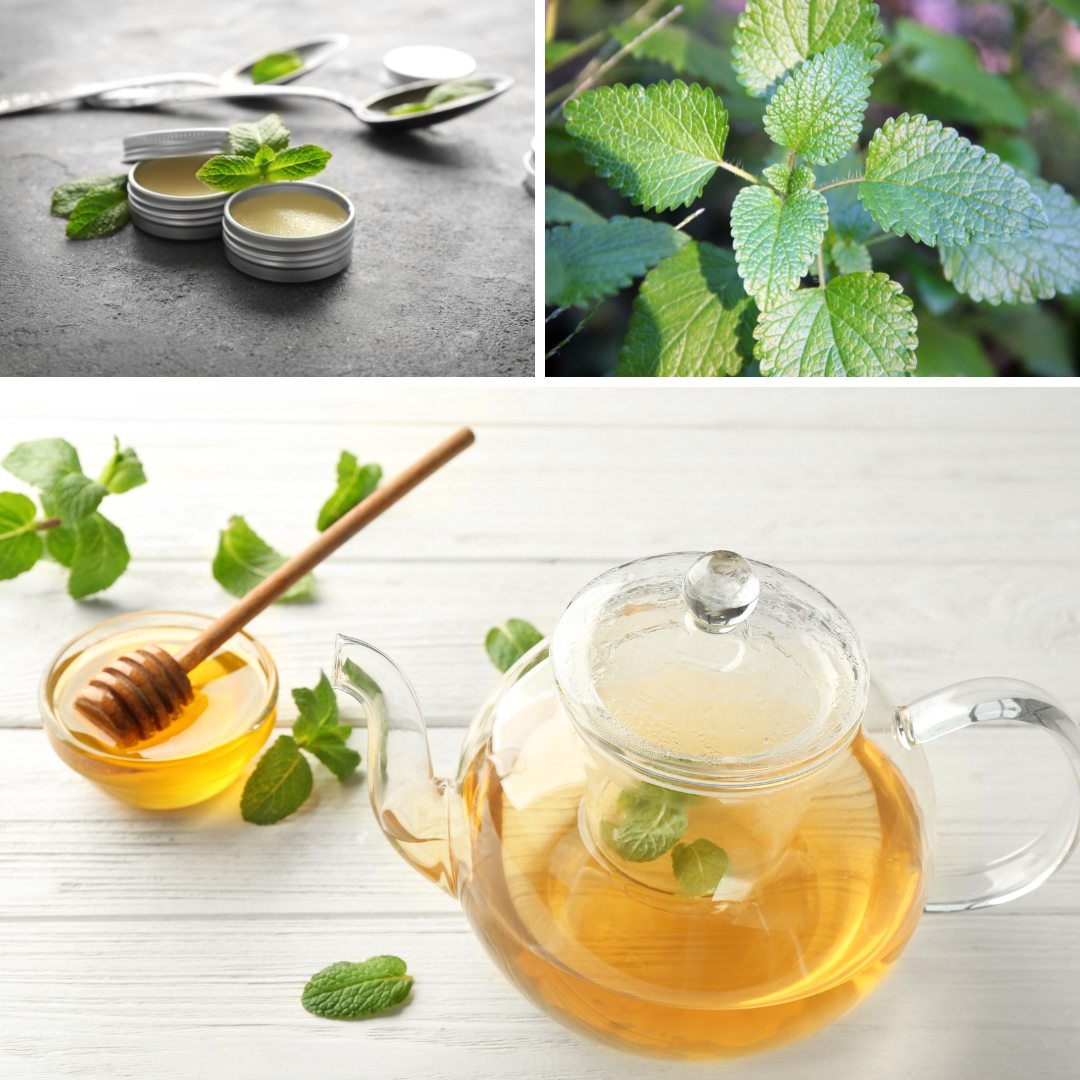
Lemon Balm, Melissa
“In writing that ‘Balm is sovereign for the brain, strengthening the memory and powerfully chasing away melancholy,’ John Evelyn (1620–1706) neatly summarized lemon balm’s long tradition as a tonic remedy that raises the spirits and comforts the heart. Today, this sweet-smelling herb is still widely valued for its calming properties, and new research shows that it can help significantly in the treatment of cold sores.
Habitat & Cultivation
“Native to southern Europe, western Asia, and northern Africa, lemon balm now grows throughout the world. The plant is propagated from seed or cuttings in spring. The aerial parts are picked from early summer onward and are best harvested just before the flowers open, when the concentration of volatile oil is at its highest.
Key Actions
■ Relaxant
■ Antispasmodic
■ Increases sweating
■ Carminative
■ Antiviral
■ Nerve tonic
■ Volatile oil
Research
“German research has shown that the volatile oil, and in particular citral and citronellal, calm the central nervous system. The oil is also strongly antispasmodic.
■ Polyphenols
“Polyphenols are antiviral. In particular, they combat the herpes simplex virus, which produces cold sores. In one research study, the average healing time of cold sores was halved to about 5 days and the timebetween outbreaks doubled.
■ Thyroid
“Lemon balm inhibits thyroid function. [Note: People with hypothyroid disease should avoid lemon balm]
Traditional & Current Uses
■ Traditional uses
“This herb has always been taken to lift the spirits. Taken regularly, it was believed to encourage longevity. Other traditional uses include healing wounds, relieving palpitations and relaxing the heart, and treating toothache.
■ Modern relaxing tonic
“Lemon balm is a relaxing tonic for anxiety, mild depression, restlessness, and irritability. It reduces feelings of nervousness and panic and will often quiet a racing heart, being a valuable remedy for palpitations of a nervous origin. Lemon balm is also useful when too much anxiety is causing digestive problems such as indigestion, acidity, nausea, bloating, and colicky pains.
■ Cold sores
“Lemon balm relieves cold sores and reduces the chances of further outbreaks.
■ Hormonal herb
“Following the discovery of its antithyroid effect, the herb is given to pople with an overactive thyroid.” Chevallier, Andrew. Encyclopedia of Herbal Medicine, pg. 113
*Note: I have an underactive thyroid, and lemon balm is not recommended for people with hypothyroidism–or underactive thyroid.

Calendula
Pot Marigold, English Marigold
“Calendula is one of the most well known and versatile herbs in Western herbal medicine. The bright orange petals are an excellent remedy for inflamed and angry skin, their antiseptic and healing properties helping to prevent the spread of infection and speed up the rate of repair. Calendula is also a cleansing and detoxifying herb, and the infusion and tincture are used to treat chronic infections.
Habitat & Cultivation
“Calendula, native to southern Europe, is cultivated in temperate regions around the world. Easily propagated from seed, it flourishes in almost all soils. The flowers are harvested as they open in early summer, and are dried in the shade.
Key Actions
■ Anti-inflammatory
■ Relieves muscle spasms
■ Astringent
■ Prevents hemorrhaging
■ Heals wounds
■ Antimicrobial
■ Detoxifying
■ Mildly estrogenic
Traditional & Current Uses
■ Therapeutic properties
“Calendula is antiseptic. Some constituents are antifungal (particularly the resins), antibacterial, and antiviral, and have shown significant activity against Candida albicans. The herb also astringes the capillaries, an action that explains its effectiveness for cuts, wounds, varicose veins, and various inflammatory conditions.
■ Skin remedy
“Calendula is above all a remedy for the skin, providing effective treatment for most minor skin problems. It is used for cuts, scrapes, and wounds; for red and inflamed skin,including minor burns and sunburn; for acne and many rashes; and for fungal conditions such as ringworm, athlete’s foot, and thrush. It is very helpful for diaper rash and cradle cap, and soothes nipples that are sore from breastfeeding.
■ Digestive disorders
“Taken internally, calendula infusion or tincture helps inflammatory problems of the digestive system such as gastritis, peptic ulcers, regional ileitis, and colitis.
■ Detoxifying
“Calendula has long been considered a detoxifying herb, and helps treat the toxicity that underlies many fevers and infections, and systemic skin disorders, such as eczema and acne. The herb is also considered cleansing for the liver and gallbladder and can be used to treat problems affecting these organs.” Encyclopedia of Herbal Medicine, pg. 73.

Rosemary
“Rosemary is an aromatic evergreen shrub with leaves similar to hemlock needles. It is native to the Mediterranean region,[9] but is reasonably hardy in cool climates. Special cultivars like ‘Arp’ can withstand winter temperatures down to about −20 °C (−4 °F).[10] It can withstand droughts, surviving a severe lack of water for lengthy periods.[11] It is considered a potentially invasive species and its seeds are often difficult to start, with a low germination rate and relatively slow growth, but the plant can live as long as 35 years.[12][13]
“Forms range from upright to trailing;[9] the upright forms can reach between 4-6 feet tall.[14] The leaves are evergreen, 2–4 cm (3⁄4–1+1⁄2 in) long and 2–5 mm (1⁄16–3⁄16 in) broad, green above, and white below, with dense, short, woolly hair.[9]
“The plant flowers in spring and summer in temperate climates, but the plants can be in constant bloom in warm climates; flowers are white, pink, purple or deep blue.[9] The branches are dotted with groups of 2 to 3 flowers down its length.[15] Rosemary also has a tendency to flower outside its normal flowering season; it has been known to flower as late as early December, and as early as mid-February (in the northern hemisphere).[16]

“Salvia rosmarinus is now considered one of many hundreds of species in the genus Salvia.[2] Formerly it was placed in a much smaller genus, Rosmarinus, which contained only two to four species including R. officinalis,[17] which is now considered a synonym of S. rosmarinus.” Wikipedia
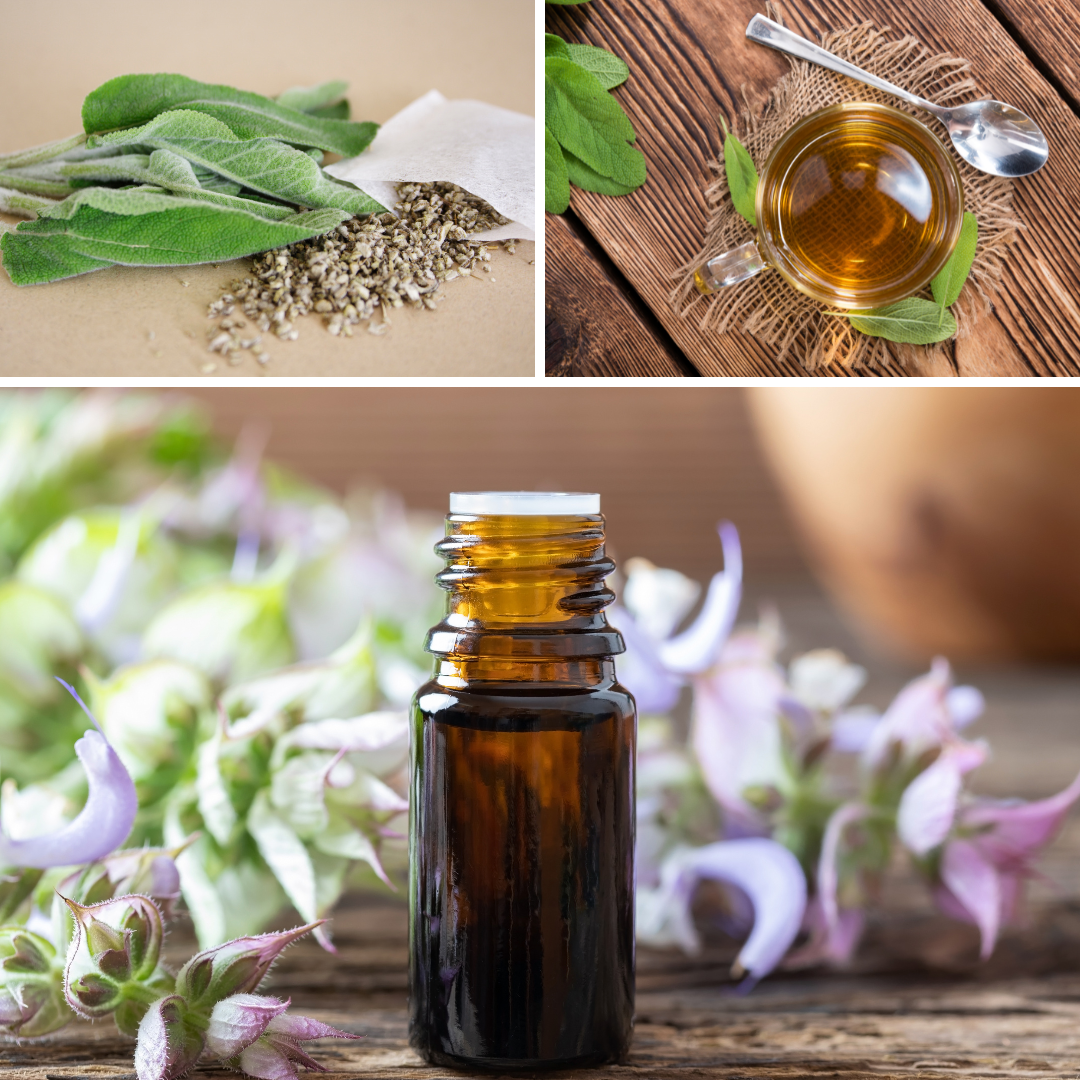
Sage
“Sage’s botanical name is a clue to its medicinal importance: Salvia comes from salvare, meaning ‘to cure’ in Latin. A medieval saying echoes this: ‘Why should a man die while sage grows in his garden?’ Today, sage is an excellent remedy for sore throats, poor digestion, and irregular periods, and it is also taken as a gently stimulating tonic. It has a slightly warm, noticeably bitter, and astringent taste.
Habitat & Cultivation
“Native to the Mediterranean, sage is cultivated all around the world, thriving in sunny conditions. It is grown from seed in spring and the plants are replaced after 3 to 4 years. The leaves are picked in summer.
“Related Species In all, there are about 500 species of Salvia. Spanish sage (S. lavandulifolia) is the most familiar culinary variety and does not contain thujone. Two close relatives of S. officinalis are dan shen (S. miltiorrhiza, p. 130) and clary sage (S. sclarea, p. 265).
Key Actions
■ Antiseptic
■ Astringent
■ Clears mucus
■ Nerve tonic
■ Estrogenic
Research
■ Nerve tonic
“Ongoing research taking place in the UK provides strong support for the traditional use of sage to enhance memory. In the most recent study (2008), healthy volunteers averaging 73 years of age showed a significant improvement in memory processing and accuracy of attention after taking a single dose of sage extract. Interestingly, a moderate dose, equivalent to 2.5 g of sage, proved most effective, more so than higher doses.
■ Sore throat
“In a randomized trial published during 2006, a sage throat spray was found to relieve throat pain in people who had acute throat infection.
■ Hormonal activity
“The herb’s longstanding use during menopause has also been researched. In the most recent study, undertaken in Switzerland (2011), women with at least 12 months of hot flashes reported an average 64% decrease in symptoms after 8 weeks of taking sage.
■ Lowering blood fat levels
“A clinical trial published in 2011 in Phytotherapy Research concluded that ‘sage may be effective and safe in the treatment of hyperlipidemia.’ All blood fat markers showed improvement in those taking sage.
Traditional & Current Uses
■ Sore throat
“Sage’s combination of antiseptic and astringent action makes it ideal as a gargle for sore throats and throat infections. It can equally be used for mouth ulcers and sore gums.
■ Hormonal remedy
“A valuable remedy for irregular and scanty periods, sage encourages better blood flow at menstruation. The herb is thought to reduce or prevent sweating and can prove particularly effective during menopause. It also helps to reduce hot flashes and night sweats and it has a calming, relaxant aspect. Sage will decrease breast-milk production, and is traditionally taken by a mother while weaning.
■ Digestive tonic
“Sage has a long traditional use as a digestive aid, supporting stomach health and promoting better digestion and absorption.” Chevaldrew. Encyclopedia of Herbal Medicine, pg. 131
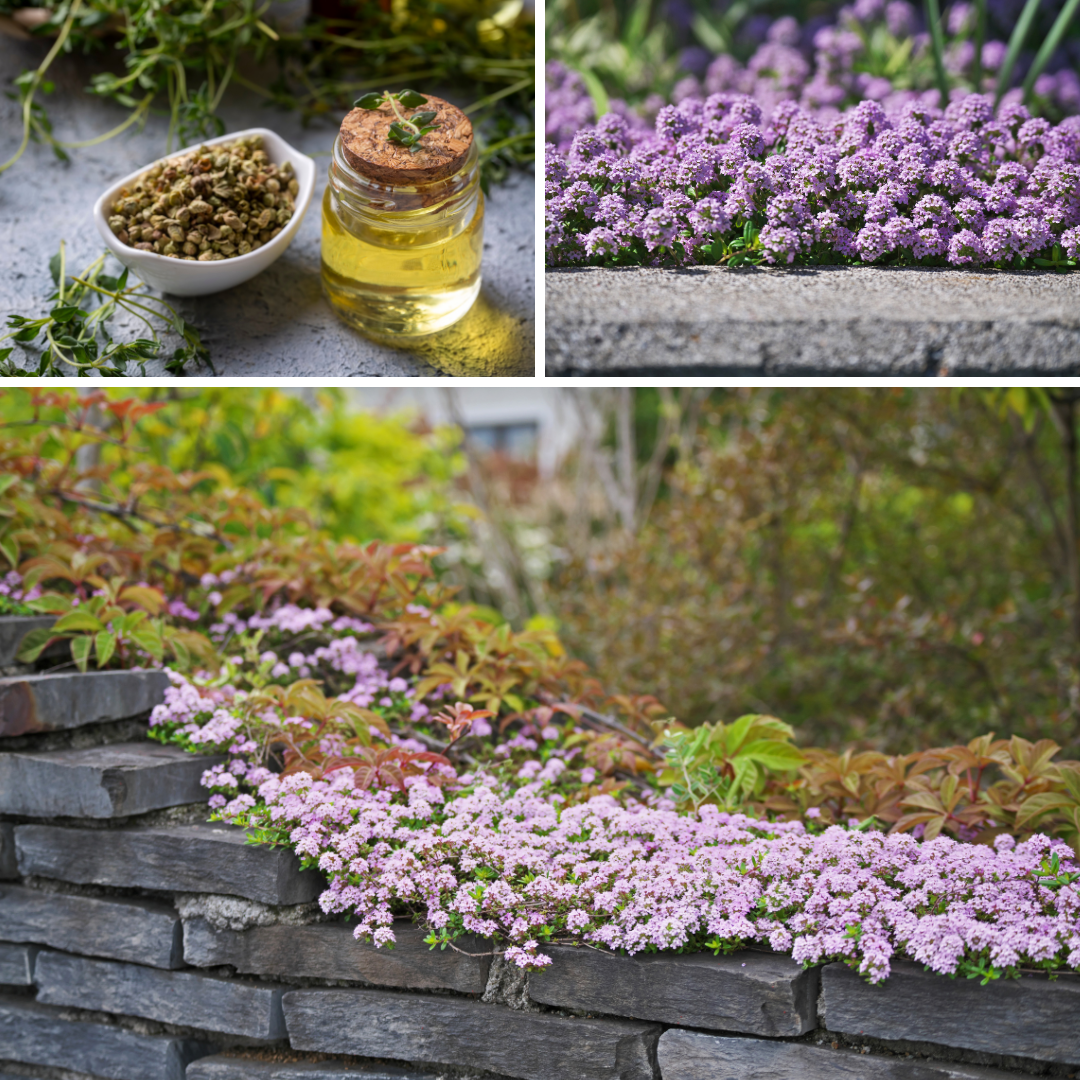
Thyme
“Thyme was praised by the herbalist Nicholas Culpeper (1616–1654) as ‘a notable strengthener of the lungs, as notable a one as grows; neither is there a better remedy growing for that disease in children which they commonly call chin-cough [whooping cough].’ Thyme is an excellent antiseptic and tonic, and today it is still used as a respiratory remedy, as well as being important for a variety of other ailments.
Habitat & Cultivation
“Thyme is a cultivated variety of the wild thyme (T. serpyllum, p. 276) of southern Europe and is now grown worldwide. It is raised from seed or by root division in spring and prefers light, chalky soils. The aerial parts are harvested in summer. Related Species There are many Thymus species, each with a different volatile oil content. Wild thyme (T. serpyllum, p. 276) is often used in the same way as thyme
Key Actions
■ Antiseptic
■ Tonic
■ Relieves muscle spasms
■ Expectorant
■ Expels worms
■ AntioxidantResearch
■ Volatile oil
“Thyme’s volatile oil is strongly antiseptic—the constituent thymol, in particular, is a most effective antifungal. The oil is also expectorant and it expels worms.
■ Anti-aging
“Research in the 1990s in Scotland suggests that thyme and its volatile oil have a markedly tonic effect, supporting the body’s normal function and countering the effects of aging. More recent research indicates that thyme is strongly antioxidant and may help maintain higher levels of essential fatty acids within the brain.
■ Stomach ulcers
“Extracts of the herb have shown strong antibacterial activity against H. pylori, a bacterium often associated with stomach ulcers.
■ Menstrual pain
“Many compounds within thyme relieve muscle cramps. A 2014 Iranian clinical trial compared the ability of thyme and ibuprofen to relieve period pains. The findings showed both treatments to be effective.T
raditional & Current Uses
■ Infections
“The antiseptic and tonic properties of thyme make it a useful tonic for the immune system in chronic, especially fungal, infections, as well as an effective remedy for throat and chest infections.
■ Asthma & hay fever
“Thyme is prescribed with other herbs for asthma, especially in children. Its invigorating qualities balance the sedative effect of many herbs used for asthma. Thyme is also helpful in hay fever.■ Worms Thyme is often used to treat worms in children.
■ External uses
“Applied to the skin, thyme relieves bites and stings, and is used for sciatica and rheumatic pains. It helps ringworm, athlete’s foot, thrush, and other fungal infections, as well as scabies and lice.
“Thyme infusion and diluted oil are also massaged into the scalp to encourage hair growth and reverse hair loss.”Chevallier, Andrew. Encyclopedia of Herbal Medicine, pg. 143.
Discover more from Jacki Kellum
Subscribe to get the latest posts sent to your email.